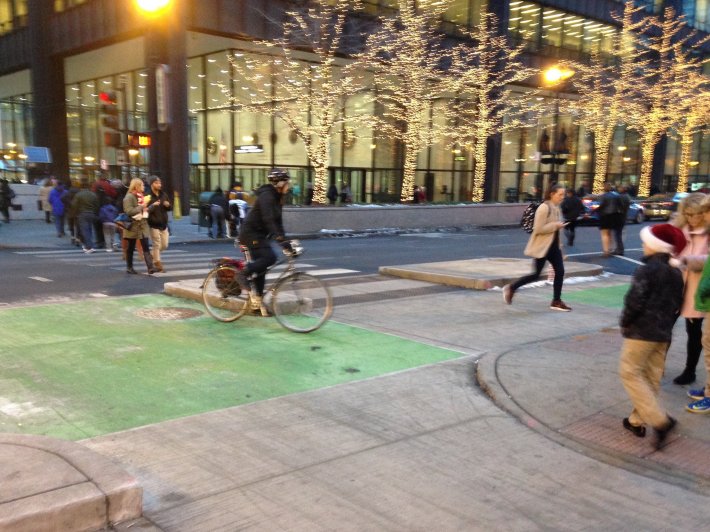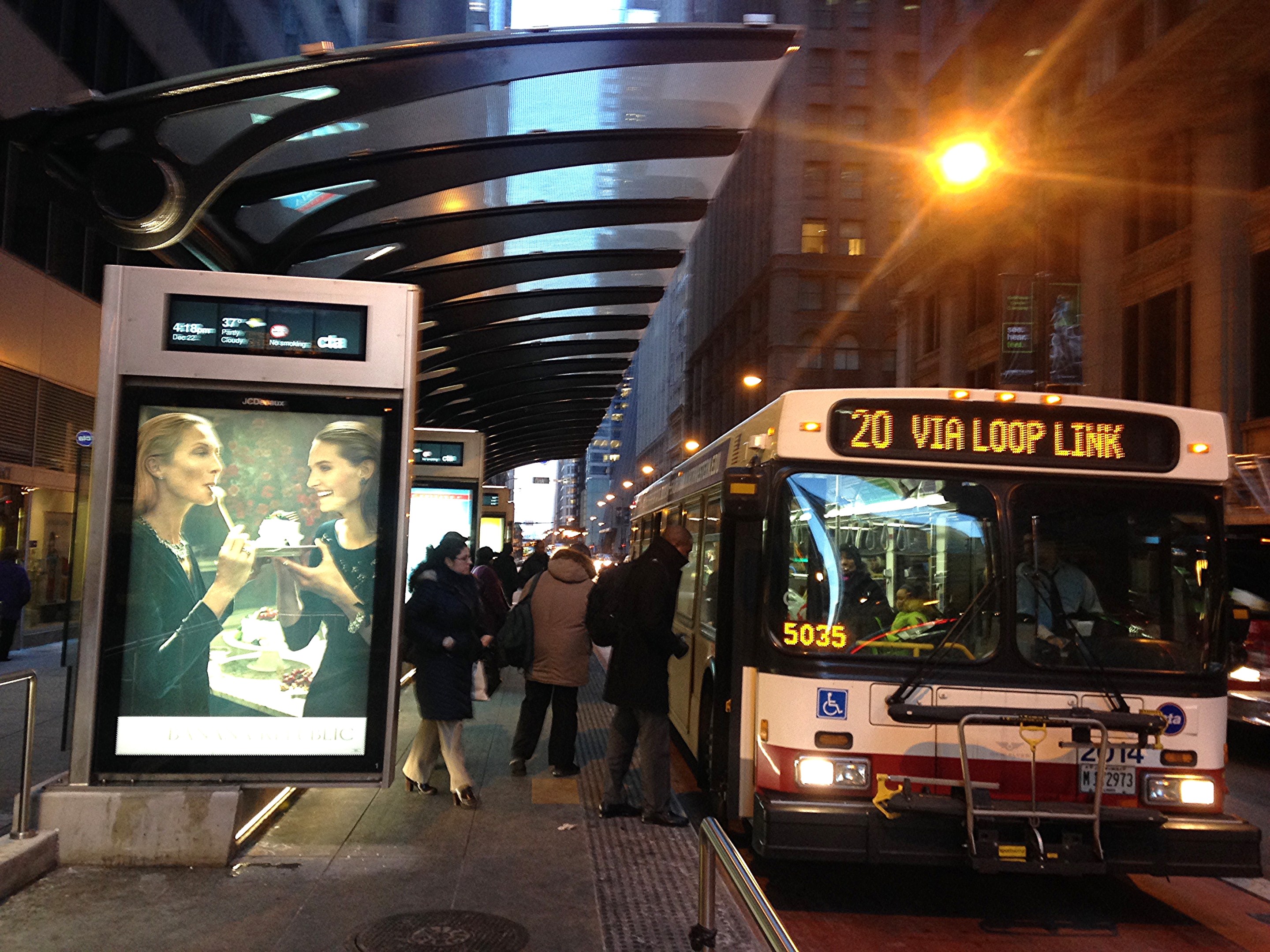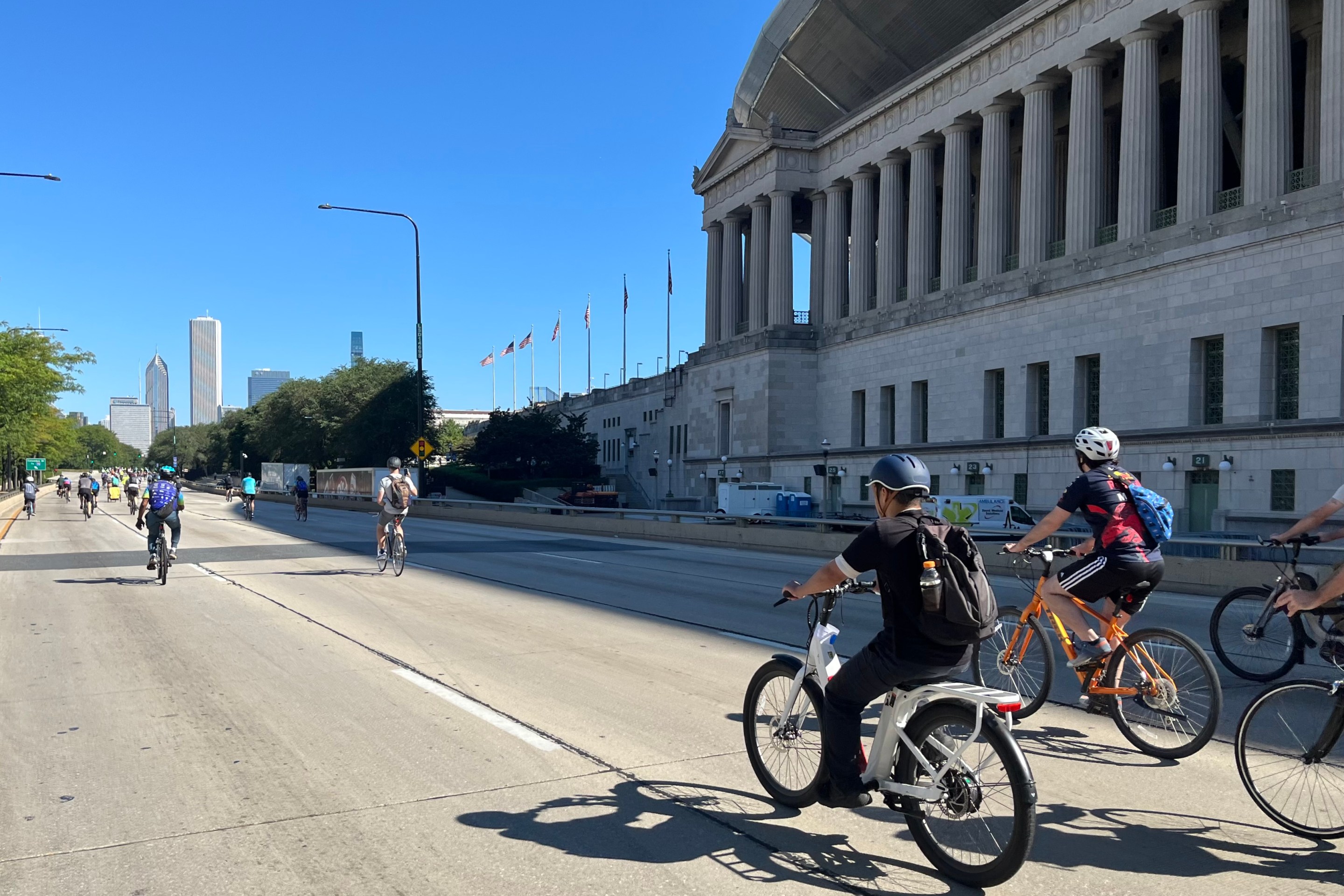Yesterday marked the one-year anniversary of the Loop Link bus rapid transit corridor. While the system doesn’t seem to have dramatically sped up bus service from the previous, glacial 3 mph rush-hour average, it does appear that bus service is somewhat more efficient than it used to be, and is perhaps getting close to the city’s modest goal of 6 mph speeds.
And the reconfiguration of Madison, Washington, Randolph, Canal, and Clinton as part of the project has had a number of collateral benefits. Converting excess mixed-traffic lanes to bus lanes and protected bike lanes has resulted in shorter crossing distances for pedestrians and safer motor vehicle speeds.
And yet, downtown car and truck traffic hasn’t ground to a halt, as some might have assumed it would. If it had, you can be sure the mainstream media would have reported on the problem, so the fact that I haven’t seen any negative press about Loop Link for many months is a good sign.
The Loop Link street remixes gave us the new couplet of protected bike lanes on Washington and Randolph, plus the two-way protected lane on Clinton (which was recently extended a block south to Van Buren). Along with the existing two-way PBL on Dearborn, that created a decent network of protected lanes in our central business district, which is rare among U.S. cities.
The recently opened Union Station Transit Center eases transfers between CTA buses and Metra and Amtrak trains. Along with moving CTA bus loading off of Canal, the redesign of that street has helped organize the formerly chaotic mix, which also includes private cars, cabs, and intercity buses.

Of course there are some frustrating aspects of the Loop Link corridor as well. The system doesn’t yet have prepaid boarding, which is a key timesaving feature of first-class BRT networks. And since, unlike New York City’s Select express bus routes, there’s no camera enforcement of the CTA bus-only lanes, too often private vehicles, especially corporate shuttles, are seen in the red lanes.
Despite these issues, the CTA says Loop Link’s inaugural year has been a success overall. “We are pleased with Look Link's performance,” said spokeswoman Tammy Chase via email. “The Loop Link corridor has already helped to achieve the project’s original goals of organizing traffic, improving overall mobility and efficiency for the corridor, improve CTA bus speeds and improving the choices people have for travel.”
Chase added that while bus speeds have improved, the agency won’t be able to make a full assessment of the Loop Link corridor’s performance until construction projects at Adams/Canal and Madison/Wabash are completed. The work is scheduled to wrap up next year.
“As for bus-only lanes, which you've asked about in the past, we continue to have conversations with the city to address traffic violations of non-CTA vehicles using the dedicated bus lanes,” Chase said. “As these violations are reduced, we expect to see improvement in travel times as well.”
Meanwhile, the three-month test of prepaid boarding at the Madison/Dearborn station, which took place during evening rush hours, has just finished. “We’ll be looking at the results as we explore ways to enhance service reliability and speeds along Loop Link,” Chase said. Hopefully the city will move quickly to implement prepaid boarding at all eight Loop Link stations, which could significantly shorten travel times.
Assuming that there’s improvement in these two areas in 2017, Loop Link service could start living up to its full potential. As it is, while the corridor currently falls short of being a robust BRT system, it is an improvement to the former status quo that seems to have become an accepted part of the downtown scene.






